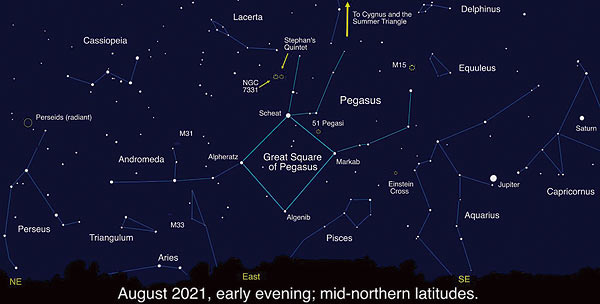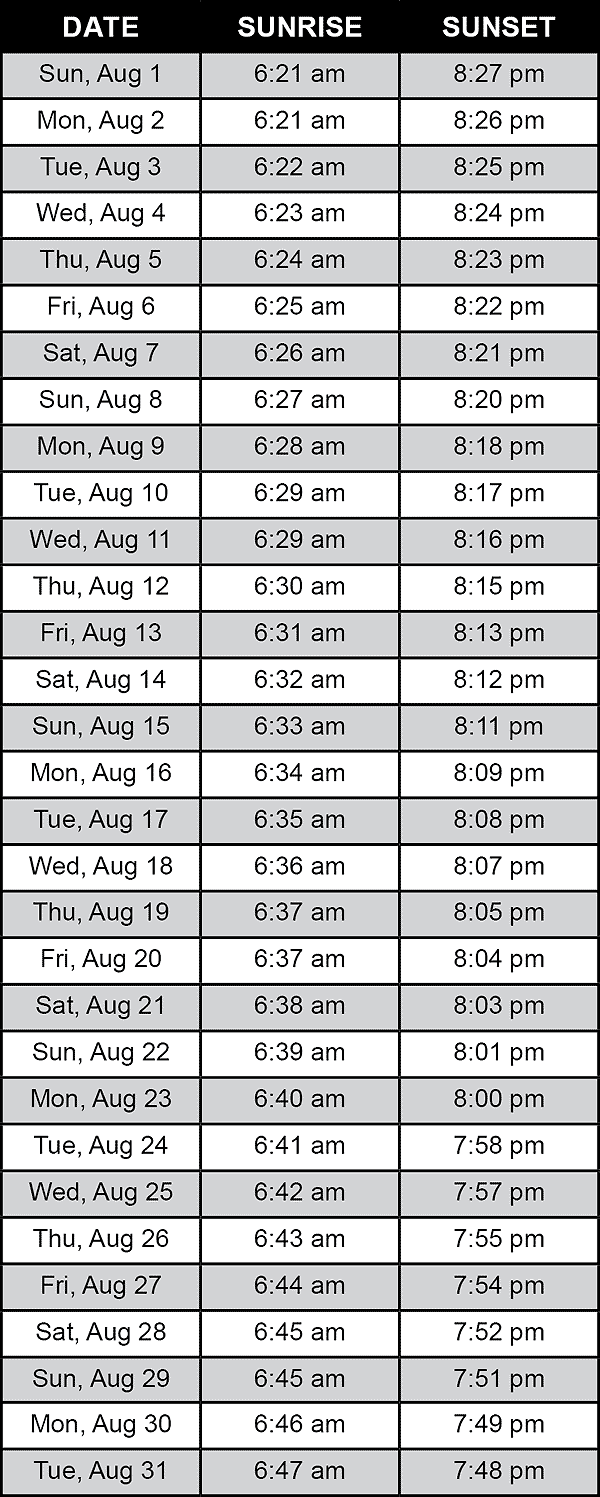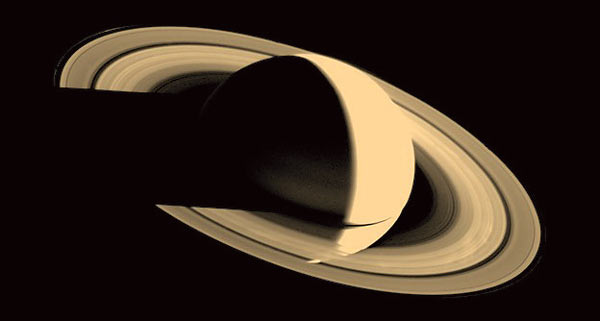The Great Square of Pegasus by David Porter
The Summer Triangle may be the most famous seasonal star pattern, but during early August evenings another geometrically-themed asterism rises: the Great Square of Pegasus. August evenings are an excellent time to look for the Great Square, as it will be rising in the east after sunset. If not obvious at first, wait for this star pattern to rise a bit above the murky air, and remember that depending on your point of view, it may appear more like a diamond than a square. Look for it below the Summer Triangle, or to the southeast of nearby Cassiopeia at this time. As the Great Square rises in prominence during autumn evenings, it becomes a handy guidepost to finding more constellations, including some of the dimmer members of the Zodiac: Aries, Pisces, Aquarius, and Capricornus. Like the Summer Triangle, the Great Square of Pegasus is also huge, but Pegasus itself is even larger; out of the 88 constellations, Pegasus is 7th in size, and feels larger as the stars in its neighboring constellations are much dimmer.

There are many notable deep-sky objects found within the stars of Pegasus - ranging from easily spotted to expert level targets - making it a great constellation to revisit as your observing skills improve. Notable objects include the densely-packed stars of globular cluster M15, a great first target. Pegasus has quite a storied history in the field of exoplanet research: 51 Pegasi was the first Sun-like star discovered to be host to a planet outside our solar system, now officially named Dimidiam.
While observing Pegasus and its surroundings, keep your eyes relaxed and ready to catch some Perseids, too! August 2021 promises an excellent showing of this annual meteor shower. The crescent Moon sets early on the evening of the shower’s peak on August 11-12, but you can spot stray Perseids most of the month. If you trace the path of these meteors, you’ll find they originate from one point in Perseus - their radiant. Giant planets Jupiter and Saturn will be up all evening as well. Look south - they easily stand out as the brightest objects in the faint constellations Aquarius and Capricornus.
(The time of sunrise and sunset assumes a flat horizon. Actual time may vary depending upon the landscape.)

Aug 8 - New Moon at 7:50 am
Aug 15 - First Quarter at 9:19 am
Aug 22 - Full Moon at 6:01 am
Saturn - Incomprehensible Beauty of the Heavens
by Spencer Stokes
Space, the unfathomable vast expanse of everything beyond the earth’s atmosphere, is full of objects beyond mankind’s understanding. Galaxies composed of hundreds of millions of stars, immense clouds of energized gases, and stars that are thousands of times the size of our sun are just a few of the sights that await astronomers who gaze through telescopes. Though perhaps, the most amazing view that can be had with a telescope is of a neighbor. Saturn, one of the most incredible planets in the solar system, is now visible at a reasonable hour of night. Viewed with high powered telescopes the full grandeur of Saturn is revealed, banded rings adorn the yellowish planet in a sight that will never be forgotten.

Saturn is a fascinating planet with many aspects that make it entirely unique. Of course, the most unique attribute of the planet is its massive rings of rust and debris that encircle the planet. These rings extend approximately seventy-five thousand miles out from the planet’s equator and are roughly 66 feet in thickness. One hypothesis regarding the rings is that they are the remnants of a destroyed moon. Saturn has many moons, over 82 known moons orbit the massive gas giant. The largest moon, Titan, is the most interesting. It has a thick atmosphere of nitrogen and is the only object in the solar system, besides earth, to have liquid states of matter on its surface. These are some of the amazing attributes of Saturn that make it one of the most unique planets.
Luckily Saturn is a relatively easy object to find in the night sky. In the month of August look towards the southeastern sky and notice a point of light slightly brighter than the stars surrounding it. Congratulations, you’ve found Saturn! Even small binoculars will allow you to see the planet and its largest moon, Titan. Larger binoculars will show a slight football shape to the planet and small telescopes will reveal the rings of Saturn.
Dead Horse Point is located nine miles north of Moab on US 191, and 23 miles southwest on SR313 (32 miles total.) The visitor center is open from 9 a.m. to 5 p.m. daily. Closed Thanksgiving, Christmas Day, and New Year’s Day. Park admission is $20 per vehicle and is valid for three days.